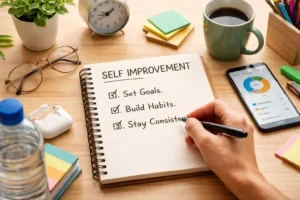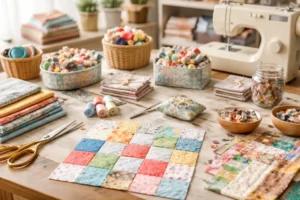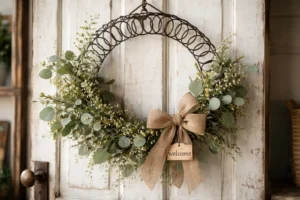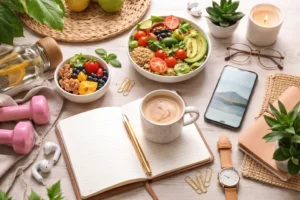I’ve lost count of how many times I’ve reached for a towel only to be disappointed. Either it feels soft but doesn’t soak up water, or it’s absorbent but leaves behind that dreaded damp smell. Over the years, I’ve tested all kinds of cloths and fabrics, and I can confidently say this: the right absorbent towel makes all the difference in daily life. Whether you’re wiping down kitchen counters, drying dishes, or reaching for a bathroom essential, the material matters.
Let me walk you through what I’ve learned — from eco-friendly cloths to linen cloths, kitchen cloths, and everything in between — so you can find the perfect balance of softness, durability, and absorbency.
Eco-Friendly Cloths: My First Step Toward Sustainable Living
A few years ago, I started cutting down on paper towel use, and that’s when I discovered eco-friendly cloths. They’re reusable, washable, and surprisingly stylish.
- Swedish dish cloths became my go-to for spills. They’re a cellulose-cotton blend that soaks up like crazy but dries quickly.
- Bamboo towels were another pleasant surprise. Naturally antimicrobial and super soft, they feel luxurious without guilt.
- And then there are recycled fabric blends — a mix of fibers that give new life to old textiles.
Switching to eco-friendly cloths not only saved me money but also cut down the waste piling up in my kitchen trash bin.
Linen Cloth: Underestimated but Unbeatable
The first time I used a linen cloth, I thought it felt a little stiff. But here’s the secret: the more you wash linen, the softer and more absorbent it gets.
What I love most about linen:
- It dries faster than cotton, so it doesn’t get that musty smell.
- It lasts for years, outliving many of my cotton towels.
- It feels light in the hand yet soaks up water with ease.
For me, linen is the perfect choice when I want a towel that stays fresh longer.
Kitchen Cloths: The Everyday Workhorses
If you peek into my kitchen drawer, you’ll find a stack of kitchen cloths. These are the ones I reach for on autopilot — to wipe counters, dry my hands, or shine up glassware.
I’ve found that not all kitchen cloths are created equal:
- Flat-weave cloths are great for polishing wine glasses.
- Terry kitchen cloths with loops are my heroes for big spills.
- Waffle weave styles hit that sweet spot between absorbent and quick-drying.
Honestly, having a mix of kitchen cloths means I’m always prepared for whatever the day throws my way.
Cotton Cloth: The Classic You Can’t Ignore

Let’s be real: everyone has used a cotton cloth at some point. Cotton is affordable, absorbent, and easy to find.
Here’s what I’ve noticed:
- Cotton soaks up water fast, making it great for drying dishes.
- It’s soft and non-scratchy, safe for everything from pots to glass.
- The only drawback? Cotton takes longer to dry and sometimes gets a funky smell if I forget to hang it up.
Despite the quirks, cotton remains a staple in my household.
Best Fabrics: What I’ve Learned Through Trial and Error
Over time, I’ve experimented with different textiles, and I can say without hesitation that some are better than others. Here are my thoughts on the best fabrics for absorbent towels:
- Cotton: Reliable and soft but slower to dry.
- Linen: Light, quick-drying, and durable.
- Bamboo: Soft, eco-friendly, and highly absorbent.
- Hemp: Practically indestructible and naturally antibacterial.
- Microfiber: Great for scrubbing but less eco-friendly.
- Swedish cloths: My paper towel replacement — nothing soaks up like them.
- Terrycloth: Thick and looped, perfect for heavy-duty messes.
No single fabric wins in every category, but choosing based on your priorities (eco-friendly, quick-dry, durability) makes all the difference.
Dish Cloths: A Must-Have in Every Kitchen
There’s no denying it — dish cloths are the unsung heroes of every kitchen. I keep several on rotation so I always have a fresh one handy.
My dish cloth essentials:
- Absorbent cotton dish cloths for drying plates.
- Eco-friendly versions for wiping down surfaces.
- Knitted or crocheted dish cloths that add a handmade touch to the kitchen.
They’re small, handy, and honestly, I’d be lost without them.
Dishcloths: Same Idea, Different Style
Now, some people write it as dish cloths, others as dishcloths. In practice, they’re the same thing. I’ve noticed that dishcloths (one word) tend to be marketed as the scrubbier, tougher cloths, while dish cloths (two words) can mean anything from decorative kitchen towels to everyday rags.
No matter what you call them, the absorbency of the fabric makes the real difference.

Absorbent Fabric: The Science Behind the Soak
When I started nerding out about cleaning cloths, I learned something fascinating: the secret lies in absorbent fabric.
- Natural fibers (like cotton, bamboo, hemp, linen) love water — they soak it up naturally.
- Synthetic fibers (like microfiber) are designed with split threads that trap water and grease.
- Weave density also matters: loops, waffles, and looser weaves usually hold more liquid.
Understanding this helped me choose towels that don’t just look nice but actually work.
Kitchen Towel: More Than Just a Rag
A kitchen towel isn’t just for drying dishes. Mine are multi-taskers that I use for:
- Drying hands when cooking.
- Covering bread dough while it rises.
- Wiping down the sink after dinner.
- Polishing stainless steel appliances.
The best kitchen towels in my opinion? Waffle weave linen-cotton blends. They’re absorbent, stylish, and don’t feel heavy even when damp.
Final Thoughts: My Go-To Absorbent Towel
After years of trial and error, I’ve learned that the best absorbent towel depends on the task. For quick-drying freshness, I lean toward linen. For heavy spills, I grab terrycloth. For sustainable living, eco-friendly Swedish dish cloths are unbeatable. And for everyday reliability, I still keep cotton around.
The bottom line? Don’t settle for a towel that disappoints. With so many eco-friendly cloths, linen cloths, kitchen cloths, cotton cloths, dish cloths, dishcloths, and absorbent fabrics out there, you can build a collection that makes cleaning easier, greener, and maybe even a little more enjoyable.
FAQs
An absorbent towel is designed to soak up water quickly and efficiently, reducing the number of wipes needed. The fabric type and weave play a huge role in how well it performs.
Yes, eco-friendly cloths like bamboo or Swedish dish cloths often absorb even more than cotton. They also dry faster, which helps prevent odors.
Absolutely. Linen cloth dries quickly, resists mildew, and gets softer with every wash, making it a favorite for kitchen and everyday use.
It depends on your household size, but having 5–7 cloths in rotation ensures you always have a fresh one while others are in the wash.
The best fabric depends on your needs: cotton for everyday use, linen for quick-dry freshness, bamboo for eco-friendliness, and terrycloth for heavy spills.
Both terms mean the same thing, though some people use “dishcloths” for scrubbier styles. Either way, absorbent fabric makes them more effective.
Wash them regularly, avoid fabric softeners, and let them air-dry fully. Quick-drying fabrics like linen or bamboo are less likely to develop odors.













